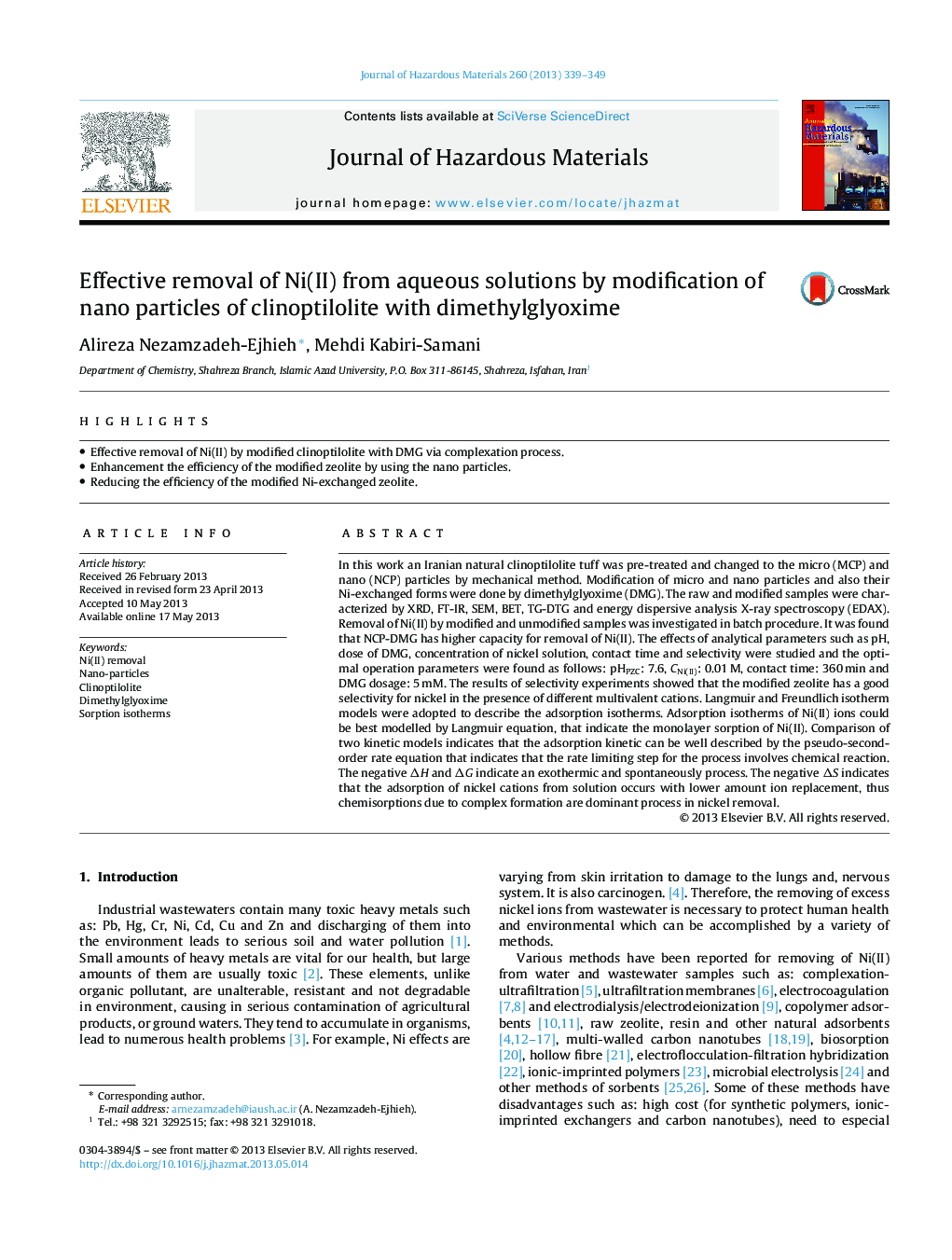| Article ID | Journal | Published Year | Pages | File Type |
|---|---|---|---|---|
| 6972392 | Journal of Hazardous Materials | 2013 | 11 Pages |
Abstract
In this work an Iranian natural clinoptilolite tuff was pre-treated and changed to the micro (MCP) and nano (NCP) particles by mechanical method. Modification of micro and nano particles and also their Ni-exchanged forms were done by dimethylglyoxime (DMG). The raw and modified samples were characterized by XRD, FT-IR, SEM, BET, TG-DTG and energy dispersive analysis X-ray spectroscopy (EDAX). Removal of Ni(II) by modified and unmodified samples was investigated in batch procedure. It was found that NCP-DMG has higher capacity for removal of Ni(II). The effects of analytical parameters such as pH, dose of DMG, concentration of nickel solution, contact time and selectivity were studied and the optimal operation parameters were found as follows: pHPZC: 7.6, CNi(II): 0.01Â M, contact time: 360Â min and DMG dosage: 5Â mM. The results of selectivity experiments showed that the modified zeolite has a good selectivity for nickel in the presence of different multivalent cations. Langmuir and Freundlich isotherm models were adopted to describe the adsorption isotherms. Adsorption isotherms of Ni(II) ions could be best modelled by Langmuir equation, that indicate the monolayer sorption of Ni(II). Comparison of two kinetic models indicates that the adsorption kinetic can be well described by the pseudo-second-order rate equation that indicates that the rate limiting step for the process involves chemical reaction. The negative ÎH and ÎG indicate an exothermic and spontaneously process. The negative ÎS indicates that the adsorption of nickel cations from solution occurs with lower amount ion replacement, thus chemisorptions due to complex formation are dominant process in nickel removal.
Related Topics
Physical Sciences and Engineering
Chemical Engineering
Chemical Health and Safety
Authors
Alireza Nezamzadeh-Ejhieh, Mehdi Kabiri-Samani,
